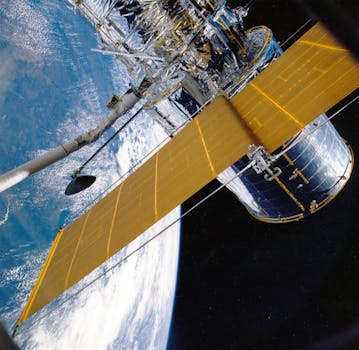
GEO Satellites: Understanding the Technology and Applications
GEO satellites, or Geostationary Earth Orbit satellites, are a type of satellite that orbits the Earth at an altitude of approximately 36,000 kilometers, remaining stationary relative to a fixed point on the planet. This unique characteristic allows GEO satellites to provide continuous coverage of a specific region, making them ideal for a wide range of applications, including telecommunications, weather forecasting, and navigation.
GEO satellites have been in use for several decades, with the first GEO satellite, Syncom 2, launched in 1963. Since then, the technology has evolved significantly, with modern GEO satellites offering higher bandwidth, greater power, and more advanced propulsion systems. Today, there are over 500 GEO satellites in orbit, providing services such as television broadcasting, broadband internet, and mobile communications.
The Technology Behind GEO Satellites
GEO satellites are designed to operate in the geostationary orbit, which is a circular orbit that allows the satellite to remain stationary relative to a fixed point on the Earth. To achieve this, the satellite must orbit the Earth at a speed of approximately 3.07 kilometers per second, which is the same speed as the Earth’s rotation. This requires a significant amount of energy, which is typically provided by a combination of solar panels and batteries.
GEO satellites typically consist of several components, including a payload, a bus, and a propulsion system. The payload is the part of the satellite that carries the communications equipment, such as antennas and transponders. The bus is the main structure of the satellite, which provides the necessary power, temperature control, and navigation. The propulsion system is used to maintain the satellite’s position and altitude, as well as to perform any necessary maneuvers.
Applications of GEO Satellites
GEO satellites have a wide range of applications, including telecommunications, weather forecasting, navigation, and Earth observation. In the field of telecommunications, GEO satellites are used to provide broadband internet, mobile communications, and television broadcasting. They are also used to support disaster relief efforts, providing critical communications infrastructure in areas affected by natural disasters.
In addition to telecommunications, GEO satellites are used to monitor the weather and climate. They provide images of cloud patterns, sea surface temperatures, and other meteorological data, which are used to predict weather patterns and track storms. GEO satellites are also used for navigation, providing location information and timing signals that are used by GPS receivers.
Future of GEO Satellites
The future of GEO satellites is likely to be shaped by advances in technology and the increasing demand for satellite-based services. One of the key trends in the industry is the development of high-throughput satellites, which offer greater bandwidth and faster data rates. These satellites are designed to support a wide range of applications, including broadband internet, mobile communications, and television broadcasting.
Another trend in the industry is the use of electric propulsion systems, which offer greater efficiency and longer mission lifetimes. Electric propulsion systems use electricity to accelerate ions or xenon gas, providing a high specific impulse and a longer mission lifetime. This technology is expected to play a key role in the development of future GEO satellites, enabling them to operate for longer periods and provide more services.
